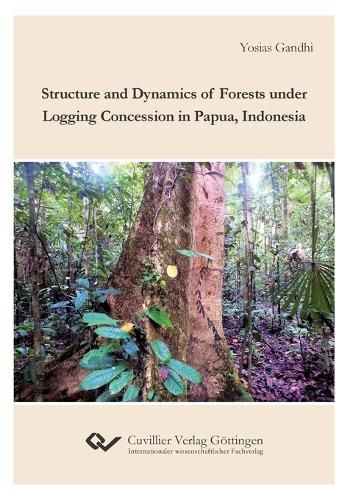Readings Newsletter
Become a Readings Member to make your shopping experience even easier.
Sign in or sign up for free!
You’re not far away from qualifying for FREE standard shipping within Australia
You’ve qualified for FREE standard shipping within Australia
The cart is loading…






The sexiest lowland forests in Papua Indonesia, hosting many high-valued timber species, attract the country's authorities to allocate 94% as production forests. The main aim is to manage the forests sustainably under a concessionaire system strongly requiring sustainable-sense protocols stated in the national silviculture system-TPTI. However, in many cases, the logging activities in the tropics fail to perform sustainability in production and ecological integrity due to unavoidable high harvesting intensity adopted in uniform cutting protocols. Therefore, comprehending an intact forest's local-specific features helps develop an adaptable silviculture technique. The book elaborates on 143 species identified in two logging concessions of Papua and explains significant differences in the distinct primary forests formed by the species. It also reveals the individuals and species of commercial timbers left after logging. Furthermore, it presentably discusses the current logging impacts potentially changing the species' relative abundance, downgrading the future degree of tree diversity and causing a massive timber volume reduction that fizzles out to enter the third cycle. Additionally, the state-of-the-art method of relating species' slope structure with its sapwood content of ?15N and N is conceptually explained to classify 103 species by light-requirement trait. Therefore, it is a critical indicator for species selection in the enrichment planting of pre-grown seedlings and subsequent tending. Ultimately, including a combination of species-specific minimum cutting diameter in TPTI with the consequence of enlarging the concession area becomes the ambitious goal of this work.
$9.00 standard shipping within Australia
FREE standard shipping within Australia for orders over $100.00
Express & International shipping calculated at checkout
The sexiest lowland forests in Papua Indonesia, hosting many high-valued timber species, attract the country's authorities to allocate 94% as production forests. The main aim is to manage the forests sustainably under a concessionaire system strongly requiring sustainable-sense protocols stated in the national silviculture system-TPTI. However, in many cases, the logging activities in the tropics fail to perform sustainability in production and ecological integrity due to unavoidable high harvesting intensity adopted in uniform cutting protocols. Therefore, comprehending an intact forest's local-specific features helps develop an adaptable silviculture technique. The book elaborates on 143 species identified in two logging concessions of Papua and explains significant differences in the distinct primary forests formed by the species. It also reveals the individuals and species of commercial timbers left after logging. Furthermore, it presentably discusses the current logging impacts potentially changing the species' relative abundance, downgrading the future degree of tree diversity and causing a massive timber volume reduction that fizzles out to enter the third cycle. Additionally, the state-of-the-art method of relating species' slope structure with its sapwood content of ?15N and N is conceptually explained to classify 103 species by light-requirement trait. Therefore, it is a critical indicator for species selection in the enrichment planting of pre-grown seedlings and subsequent tending. Ultimately, including a combination of species-specific minimum cutting diameter in TPTI with the consequence of enlarging the concession area becomes the ambitious goal of this work.